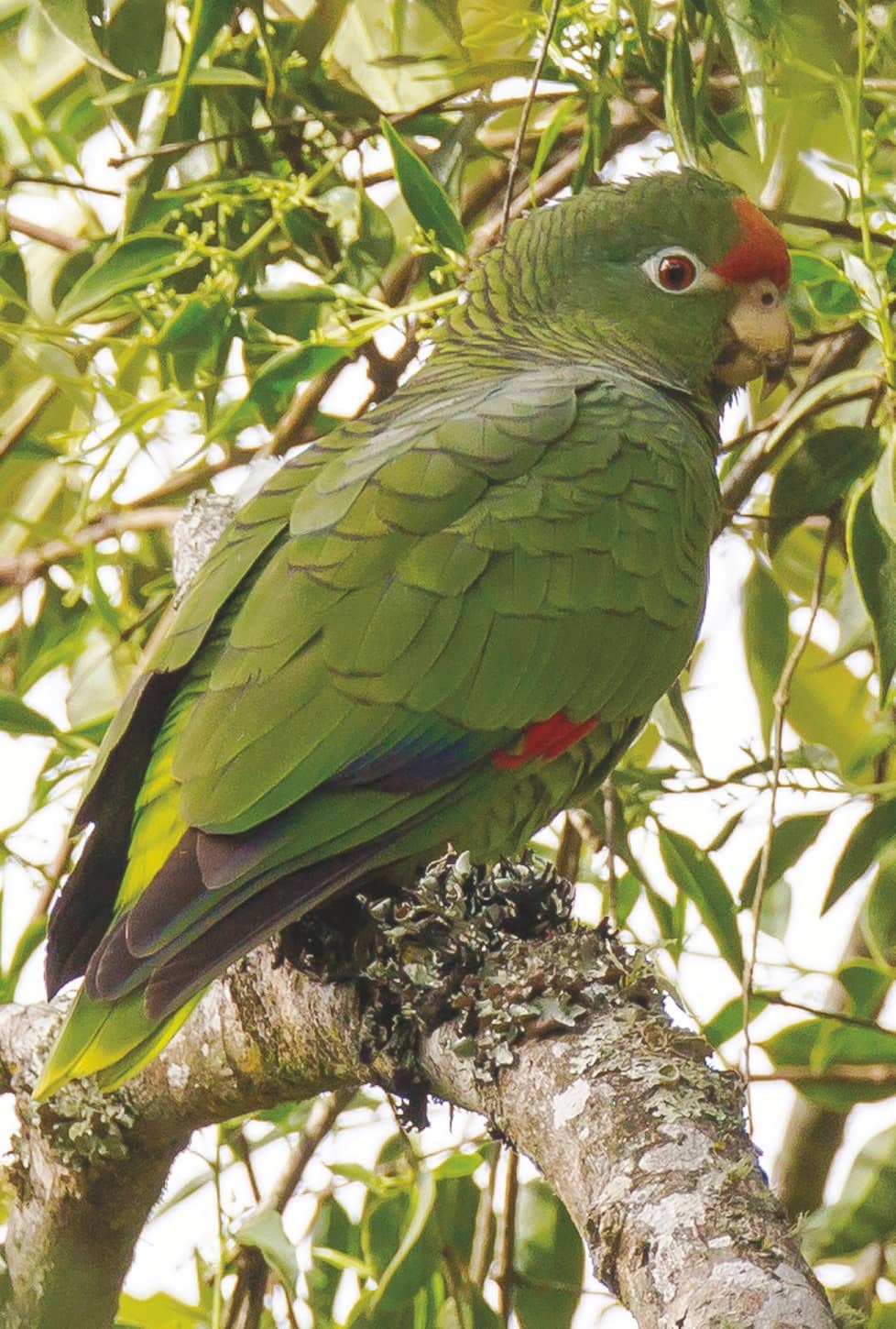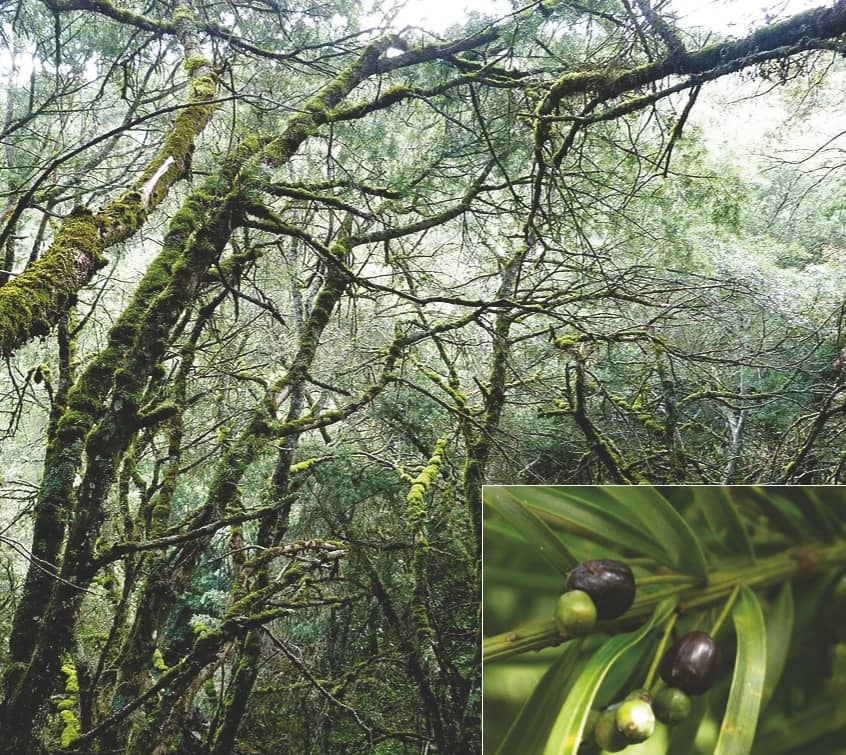Try GOLD - Free
Will Protected Areas Ensure The Future Of The Tucuman Amazon?
Parrots magazine
|August 2020
Across the backdrop of a fading orange sunset came wave after wave of clamouring Tucuman Amazons (Amazona tucumana), about 5,000 of them heading for the ‘El Fuerte’ roost where they would spend each night during the non-breeding season (May-September) of the Austral winter.

Such a thrilling spectacle could easily lead to the conclusion that Tucuman Amazons are plentiful, and indeed in the mid-2000s the species was not considered to be threatened (IUCN Red List category of ‘Least Concern’).

One person who remained unconvinced about its status is Dr Luis Rivera, scientist in the Faculty of Agrarian Sciences at the National University of Jujuy in north-west Argentina, and founder of the Foundation for the Conservation and Study of Biodiversity. With support from the Loro Parque Fundación, and accompanied by Dr Natalia Politi, his principal university co-scientist, Luis increased his research efforts to reveal a situation much more tenuous for the Tucuman Amazon and, based on their findings, in 2014 the species was deemed to be threatened and included in the category of ‘Vulnerable’ in the IUCN Red List. For more than 16 years to the present day, the research of Luis, Natalia and their scientist colleagues has unearthed a wealth of information about the Tucuman Amazon, which can serve as the backbone for the conservation of the species.

This story is from the August 2020 edition of Parrots magazine.
Subscribe to Magzter GOLD to access thousands of curated premium stories, and 10,000+ magazines and newspapers.
Already a subscriber? Sign In
MORE STORIES FROM Parrots magazine

Parrots magazine
Parrot language issue
Puerto Rico’s endangered parrots are facing a new threat to their survival – their strange squawks. In a phenomenon never seen before, Puerto Rican parrots bred in captivity, with a view to being released into the wild, were communicating with a different dialect to the wild populations.
2 mins
November 2020

Parrots magazine
Regent parrots thriving in SA wetland
Passion drips from Tim Field’s every word when he speaks about eastern Regent Parrots. The wetland manager at Banrock Station in South Australia is, it’s fair to say, smitten with these striking birds. “September and October is Regent Parrot survey time,” Tim says, “So we’re up well before dawn to make sure we’re at the wetland’s to track the fly-in, fly-out breeding population.”
1 mins
November 2020

Parrots magazine
Landmark event for Philippine Cockatoo
Exciting news has recently arrived of a landmark event in the Philippine Cockatoo Conservation Program (PCCP), the long-term endeavour to bring about the recovery of this ‘Critically Endangered’ species endemic to the Philippines. For the first time ever, a Philippine Cockatoo rescued from the wild, and subsequently released back to its original site, has been recorded to breed and produce a healthy hatchling. Such rescue and release to augment the wild population is just one of a raft of conservation measures conducted by the PCCP and supported by the Loro Parque Fundación over many years.
4 mins
November 2020

Parrots magazine
Increasing Knowledge of the Most Endangered Parrots
Fifty years ago our knowledge of the status of parrots in the wild was limited. Few parrot species were known to be in danger of extinction and these were mainly Amazona parrots which were confined to small islands. At that time very few species had been studied in the wild.
9 mins
November 2020

Parrots magazine
Coronavirus threat to PNG's animal rescue centre
Port Moresby is the capital of Papua New Guinea and is home to its unique animal rescue centre that is now facing the threat of the Covid-19 pandemic, and could be shut down. Papua New Guinea is the most populous nation in Melanesia and faces a potentially devastating wave of Covid-19 infections.
4 mins
November 2020
Parrots magazine
Cucurbitaceae enrichment for our parrots
The group of cucurbitaceae is the one that includes cucumbers and pumpkins. Climbing or creeping plants that usually cover large areas to produce fruits that usually accumulate a lot of water. In nature, these plants defend themselves with a very bitter substance called cucurbitacin.
1 min
November 2020

Parrots magazine
Rare macaw refuge destroyed
A rare bird sanctuary in Brazil, which is home to 15 per cent of the world’s population of Hyacinth and Lear’s Macaws, has been destroyed by fires, and there are now fears for the survival of these blue macaws. “It is very sad to see decades of my family’s work, years taking care and preserving nature, for this to happen,” said Ana Maria Barreto, owner of the São Francisco do Perigara, a cattle ranch and bird sanctuary of more than 61,000 acres in Mato Grosso state.
2 mins
November 2020

Parrots magazine
The value of animals
Children at a nursery and day care facility were delighted to receive a visit from some very special guests. Learning Land in Workington has a range of animals drop by, as part of an educational encounter paid for by the Co-op. The store has been working with animal specialists, Pet Encounter Cumbria, based in Workington, to deliver therapeutic and educational visits to children and the elderly.
1 mins
November 2020

Parrots magazine
Complete Psittacine Subtle Secrets for Feeding Psittacines – and Getting them to Eat
I have been daily feeding psittacines for 40 years now and there have been times in the past when I felt that was all I did each day – pets, breeders, babies, the birds at the shoppe in Santa Fe. The good news is this has taught me a whole lot about how to do it. And across all species groups, there are some really good guidelines for what to feed, when to feed, and how to make sure your parrots are actually consuming what you are giving them.
4 mins
November 2020
Parrots magazine
Calabash for parrots
Different types of calabash has grown this year very well within our organic crops and a big advantage for our parrots that are relishing every moment during this season.
1 min
November 2020
Translate
Change font size

